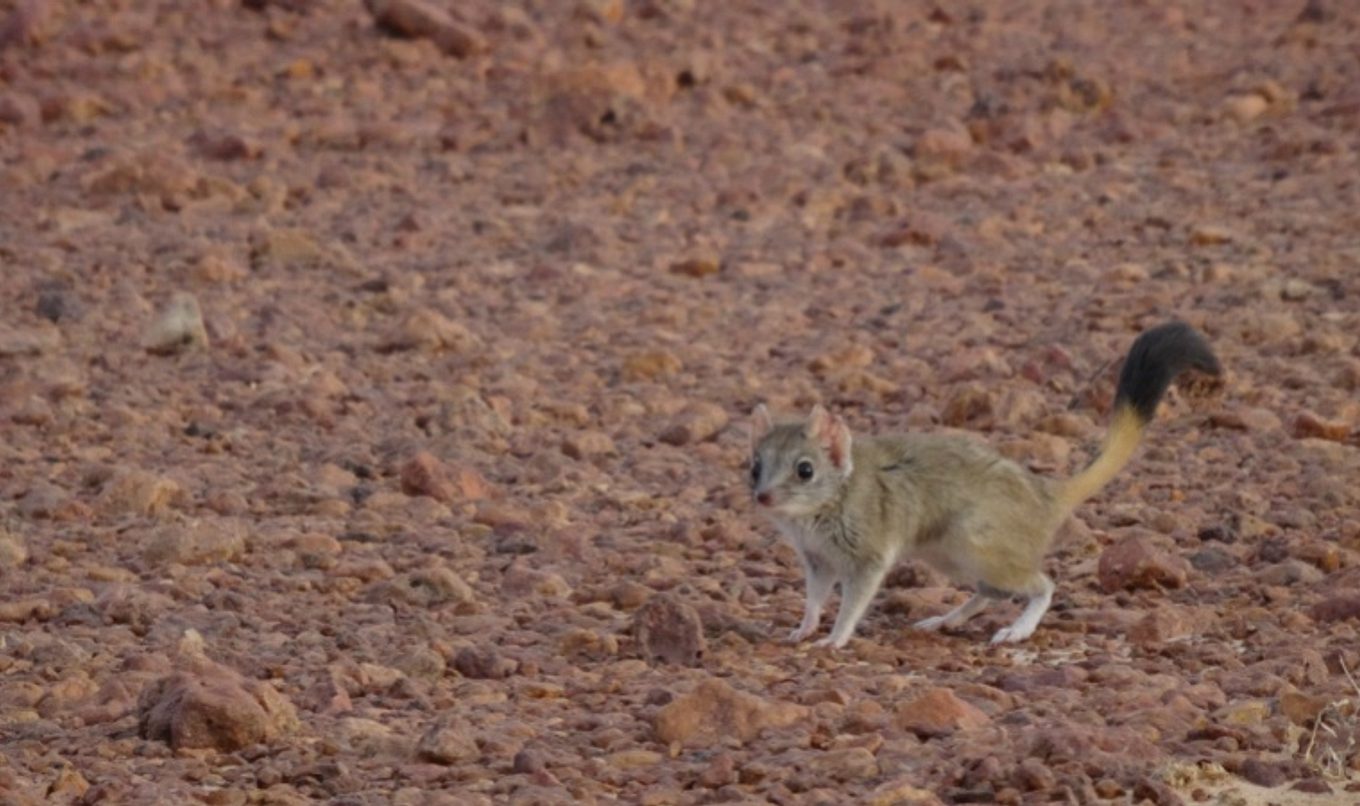Kowaris hang on in far north-east SA
Kowaris - a threatened native marsupial - found in north-east South Australia and south-west Queensland, are hanging on in South Australia, despite recent dry conditions.

Kowaris are small and light grey-brown in colour and have a distinctive brush of black hair on the tip of their tail.
Despite their size, they are feisty and ferocious carnivores and eat anything from insects to small birds and mammals. They belong to the same family of marsupials as the Tasmanian Devil and Quoll.
Researchers have been closely monitoring the Kowari population in SA with the use of trapping sites.
Natural Resources SA Arid Lands Community Ecologist Cat Lynch said trapping was conducted recently in the Sturt Stony Desert, on sites at Clifton Hills, Pandie Pandie and Cordillo Downs Stations.
“The traps are essentially aluminium boxes, spaced at 100 metre intervals,” Ms Lynch said. “They’re baited with a mixture of dog biscuits and fish oil, which the Kowaris find irresistible.
“Encouragingly we discovered that a reasonable number of Kowaris are occupying most known refuge areas, despite below average rainfall in the region in the past two years.
“We captured 24 Kowaris at the Clifton Hills and Pandie Station sites but none at the nearby Cordillo Downs Station sites.
“Kowari populations do fluctuate substantially in response to rainfall and the abundance of prey and predators, but are generally in decline.
“They are an icon in the Marree-Innamincka district, where their burrows, dug into scattered sand mounds, are prone to degradation when cattle, camels and horses congregate in high numbers, as happens near permanent water sources.
“Kowari survival relies on continued good management of their habitat through reducing these impacts.
“It is possible that managing feral predators, could benefit Kowari populations, and this will be a focus of future research.”
The SA Arid Lands Natural Resources Management Board continues to work to protect and improve the environment to ensure the survival of many threatened native species, including the Kowari.
This recent monitoring survey was commissioned by the SA Arid Lands Natural Resources Management Board and funded by the National Landcare Program. It was also made possible through the support of landholders and volunteers.

